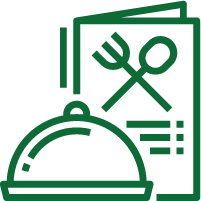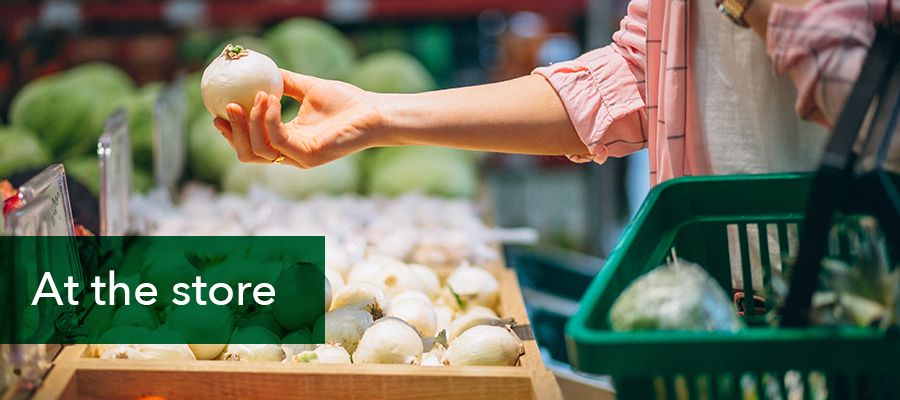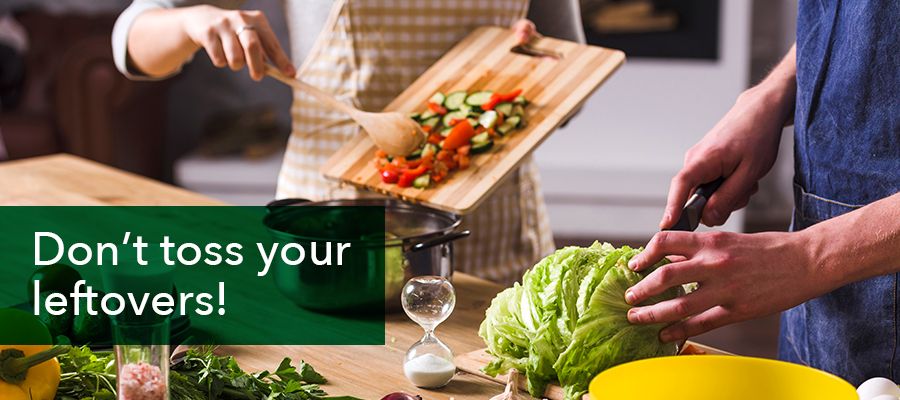Cut your grocery bill with these 10 tips
Cut your grocery bill with these 10 tips
Cut your grocery bill with these 10 tips
4/30/2020
The shift to staying home during the pandemic has challenged many families with some pretty cringeworthy grocery bills. But you can do a lot to stretch your grocery budget, and it starts with having a solid plan before you even go to the store. Here are 10 tips on how to save.

- Make a menu plan for the week.
 Involve the whole family — what would they like to eat this week? Who will prepare
the meal? Everyone has a role, including the kids.
Involve the whole family — what would they like to eat this week? Who will prepare
the meal? Everyone has a role, including the kids. Check advertisements for the store(s) where you usually shop, and plan meals around
sale items advertised.
Check advertisements for the store(s) where you usually shop, and plan meals around
sale items advertised. Consider what produce is in season, as those items will be cheaper. Use UOG’s “Buy
Guam Grown” seasonal charts for fruits and vegetables and local fresh seafood.
Consider what produce is in season, as those items will be cheaper. Use UOG’s “Buy
Guam Grown” seasonal charts for fruits and vegetables and local fresh seafood. Create a menu that’s flexible. It doesn’t matter if you have kadu (soup) or stir fry
on Monday or Thursday. You will still need the same ingredients.
Create a menu that’s flexible. It doesn’t matter if you have kadu (soup) or stir fry
on Monday or Thursday. You will still need the same ingredients. Think about your family’s favorite meals that can be cooked in large batches, portioned
into individual containers, and eaten throughout the week or placed in the freezer
for next week. Having individual ready-to-go meals will discourage you from ordering
costly take-out meals.
Think about your family’s favorite meals that can be cooked in large batches, portioned
into individual containers, and eaten throughout the week or placed in the freezer
for next week. Having individual ready-to-go meals will discourage you from ordering
costly take-out meals. Use menu-planning tools and find sample two-week menu designs for eating healthy on
a budget at choosemyplate.gov under the “Healthy Eating on a Budget” link.
Use menu-planning tools and find sample two-week menu designs for eating healthy on
a budget at choosemyplate.gov under the “Healthy Eating on a Budget” link. - Make a shopping list.
List the ingredients needed for each meal in your week’s plan, remembering to double or triple the recipe for any large-batch meals. But first, check for ingredients you already have in the pantry, refrigerator, and freezer. Plus, checking the freezer will ensure you have enough freezer space for items bought in bulk (see below).
- Eat before you shop.
Grocery shopping hungry can lead to impulse buying and unhealthy food choices.

- Stick to your list.
If you’re not hungry, this should be easy.
- Look up and down for savings.
Stores often stock the priciest items at eye level. You can save big by looking on the upper and lower shelves.
- Avoid costly convenience foods.
Convenience foods, like frozen dinners, pre-cut fruits and vegetables, and instant rice and oatmeal, are always more expensive. Instead, make them from scratch.
- Compare prices.
Most stores offer a generic brand of name-brand products at a cheaper price. These items have the same quality without the extra cost of a fancier label.
- Buy in bulk.
It is almost always cheaper to buy foods in bulk. Smart choices are family packs of chicken, steak, or fish and large bags of frozen vegetables.
- Calculate the unit cost.
The unit price is how much an item costs per pound, ounce, quart, etc. This is useful when comparing the cost of two similar items in different sized packages. The unit price is sometimes included in small print in the bottom corner of the shelf price tag, or download the free Spend Smart, Eat Smart mobile app from Iowa State University to compare two products.

- Don’t toss your leftovers!
Before they go bad, think of ways to spice up your leftovers or use them in a new meal — like throwing leftover cooked vegetables in a new batch of fried rice. Remember, throwing away food is throwing away money.
Learn more about how to make healthy lifestyle choices on a budget by following the Community Nutrition Education Programs of the University of Guam’s Cooperative Extension & Outreach unit on Facebook @UOGCNEP.

This article was written by Tanisha Aflague, a registered dietitian nutritionist as well as an extension agent III and an assistant professor of nutrition at the University of Guam. She holds a doctorate in nutrition from University of Hawaii at Manoa.

